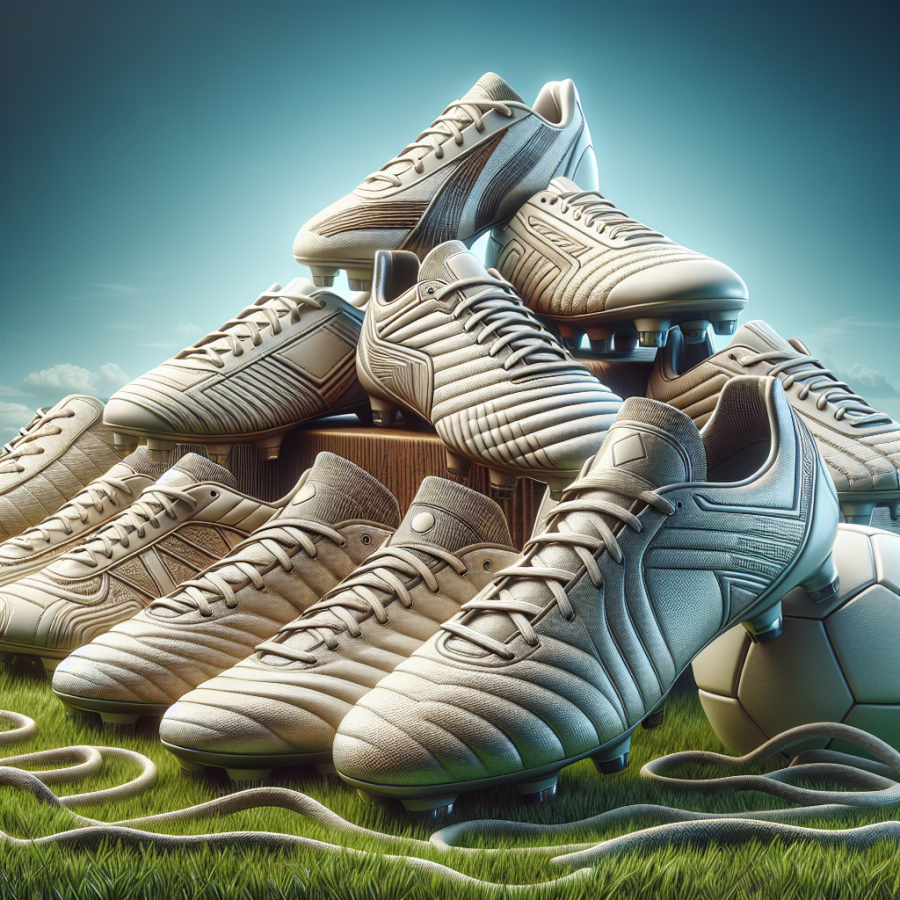Understanding the Science: How the Tightness of Soccer Cleats Affects Performance
Understanding the science behind the tightness of soccer cleats is crucial to comprehend why it significantly impacts the performance of a player on the field. The relationship between the snugness of the cleats and the soccer player's performance is equated through biodynamics, grip, player comfort, injury prevention, and player feedback mechanisms.
Biodynamics plays a vital role in determining the tightness of soccer cleats. The cleat's snugness can either help or hinder the foot's biomechanics during a match. A well-fitted soccer cleat supports the foot's natural motion, providing enough flexibility for the foot to move comfortably. Conversely, if the cleat is too tight, it may constrict the foot movements, wasting energy that should be transferred to the ball during kicks.
The grip is another factor that is greatly influenced by the tightness of soccer cleats. To make swift and effective maneuvers in a match, a soccer player often needs to change directions swiftly. If the cleats are too loose, the player's foot may slip inside the shoe, reducing the effectiveness of the grip and increasing the likelihood of losing control. If the cleats are too tight, they can often create friction between the foot and the shoe, often causing discomfort and even blisters.
Comfort is a direct and significant factor that affects a player's performance. Soccer cleats that fit snug without being overly tight will conform to the wearer's foot shape, leading to improved comfort levels on the field. Ill-fitting and excessively tight cleats may cause discomfort, leading to distraction during the game and reducing a player's performance.
Injury prevention is a critical concern when contemplating the right cleat snugness. Poorly fitted cleats, either too loose or too tight, contribute to various foot and ankle injuries. A tight cleat can constrict blood flow, leading to numbness and cramping. In the worst-case scenario, prolonged wear of excessively tight cleats can lead to conditions like foot necrosis.
Player feedback mechanisms are influenced by the cleat snugness. Soccer cleats serve as a feedback mechanism that provides players with information about the terrain and the ball. This tactile information guides the players in making swift decisions during matches. However, the tightness of the cleats can influence this feedback - overly tight cleats can limit the sensory feedback, making the play more strenuous as the player may be unable to accurately feel the ball or terrain.
Read also:
Unlocking the Benefits and Values of Team Sports
Debunking the Myth: The Importance of Properly Fitted Soccer Cleats
The significance of wearing well-fitted soccer cleats cannot be overstated. Many players, both novice and professional, are operating under a misconception: the tighter the cleats, the better they will perform. This faulty thought process-born most likely out of a combination of anecdotal football lore and a misguided association of tightness with sturdiness—is in reality, potentially harmful. It is crucial to debunk the prevailing myth and bring to light the importance of proper fitting soccer cleats.
The first critique against tight cleats revolves around potential physical damages. Excessively tight soccer cleats can constrict your foot movement and hamper your performance. Moreover, discomfort can cause distractions that might take your mind off the game. There have been numerous instances where players have been distracted by the nagging pain caused by tight cleats, only to miss an easy goal or an essential.
Moreover, prolonged use of tight cleats can result in a variety of foot health problems. This can include blisters, bunions, contusions, or in worst-case scenarios, conditions such as hammertoes or neuromas. The latter are caused by the compression of nerves in the foot, an uncomfortable affliction that can affect walking even when not playing soccer.
Now, this is not to say that soccer cleats should be too loose. A boot that feels like it’s one with your foot is a critical component to playing at your best. If they are too loose, your feet will slide inside the shoe, causing instability and increasing your chance of injuries because of a lack of appropriate support. Usual short-term indications include but are not limited to, twisted ankles, nail damage, and muscle strains.
A properly fitted soccer cleat, in comparison, offers sufficient space for toes while securing the heel firmly. Feet should have enough wiggle room to circulation, but not enough to slide around inside. This balance of fit provides optimal balance and stability, improves your footwork, and maximizes control on the ball. With properly fitted cleats, the chances of foot injuries are significantly reduced.
The process of finding the right fit involves trial and error, taking into consideration each individual player’s foot width, arch height, and overall foot shape. Many believe that wearing soccer socks when trying on new cleats gives a more representative feel of the game day scenario, in which the extra thickness can be a contributing factor to proper fit.
Furthermore, material must also be taken into account.




